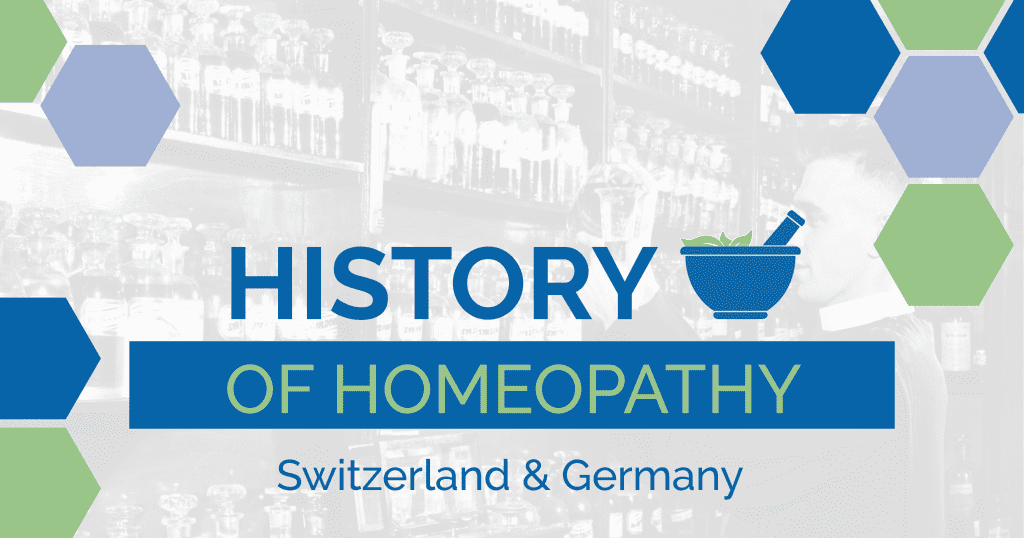Snapshots from There and Then: History of Homeopathy

In honor of AAHP’s 100th anniversary year, we’re looking back at the history of homeopathy to learn how the medical modality spread worldwide. Readers will discover startling vignettes of unexpected paths and outcomes. Many may know much about homeopathy here and now, but we hope you find our “There and Then” series informative and interesting!
Switzerland
Switzerland has a long tradition of homeopathic use; doctors were already practicing this modality in the late 1820s and early 1830s. The homeopathic association in Switzerland is one of the country’s oldest medical associations. Founded in 1856 it is similar in age and purpose to the American Institute of Homeopathy. Similar to states in the United States, each local canton in Switzerland has its own laws regarding medical practice; some restrict the use of homeopathics to only licensed medical doctors. Other cantons also permit a trained and certified “heilpractiker” (healing practitioner) to use homeopathic medicines in their practice.
Recently there was a revealing show of public support for homeopathy in Switzerland and a measurement of financial information not hitherto known. When the public insurance program discontinued payment for complementary and alternative medicines (CAM), that decision was put to a vote of the citizens; this resulted in a 67 percent vote in favor of CAM therapies (homeopathy, traditional Chinese medicine, phytotherapy, and anthroposophical medicine). However, before the government would reinstate payment, additional research was demanded. The results revealed the costs of medical therapy using additional CAM services were approximately 25 percent lower than those which only used conventional medicines.
Ranked only 20th by population and 29th by size among European countries, Switzerland ranks top by number of domestic homeopathic manufacturers — with at least 17 companies.
Germany
Germany is the home of homeopathy, of course, as it was Hahnemann’s homeland until 1835. For 20 years he had ardent and well-known followers who together formed the prover's union. The country is also the home of homeopathic veterinary practice, with the first homeopathic veterinary manual published in 1836. Germany’s history of homeopathy is a microcosm of the various threads that have run through many other countries: various factions advocating their style of practice and denigrating others’ efforts.
Early on, the practice of using combinations or “specifics” blossomed for domestic use, at which point the “classical” modality of single remedy/single dose became virtually unknown for close to a century. Today, a large organization with more than 1,000 members (of the approximately 3,000 homeopathically trained medical practitioners), reveals the significant reach and breadth of homeopathy in Germany. Their professional work is complemented by two large non-profits, which work on the political level for public health (e.g., by promoting homeopathy as a therapy).
Combination products are prevalent throughout the country; many practitioners have little training in “classical homeopathy.” There are more than 30 known teaching institutions, a dozen large manufacturers, multiple regularly-published journals, and three homeopathic hospitals. The majority of pharmacies stock homeopathic products, with the largest drug wholesalers able to provide thousands of homeopathic products on a same-day or next-day basis to their retail pharmacy clientele.
References:
https://www.wholehealthnow.com/homeopathy_pro/switzerland.html
https://homeomart.net/category/homeopathy-medicine-india-brand-wise-lists/switzerland-homeopathy/
